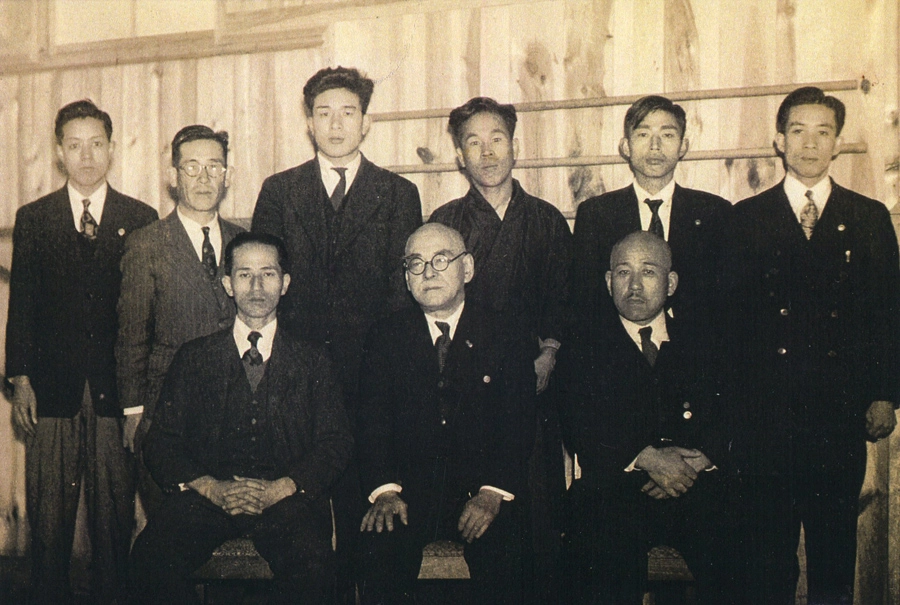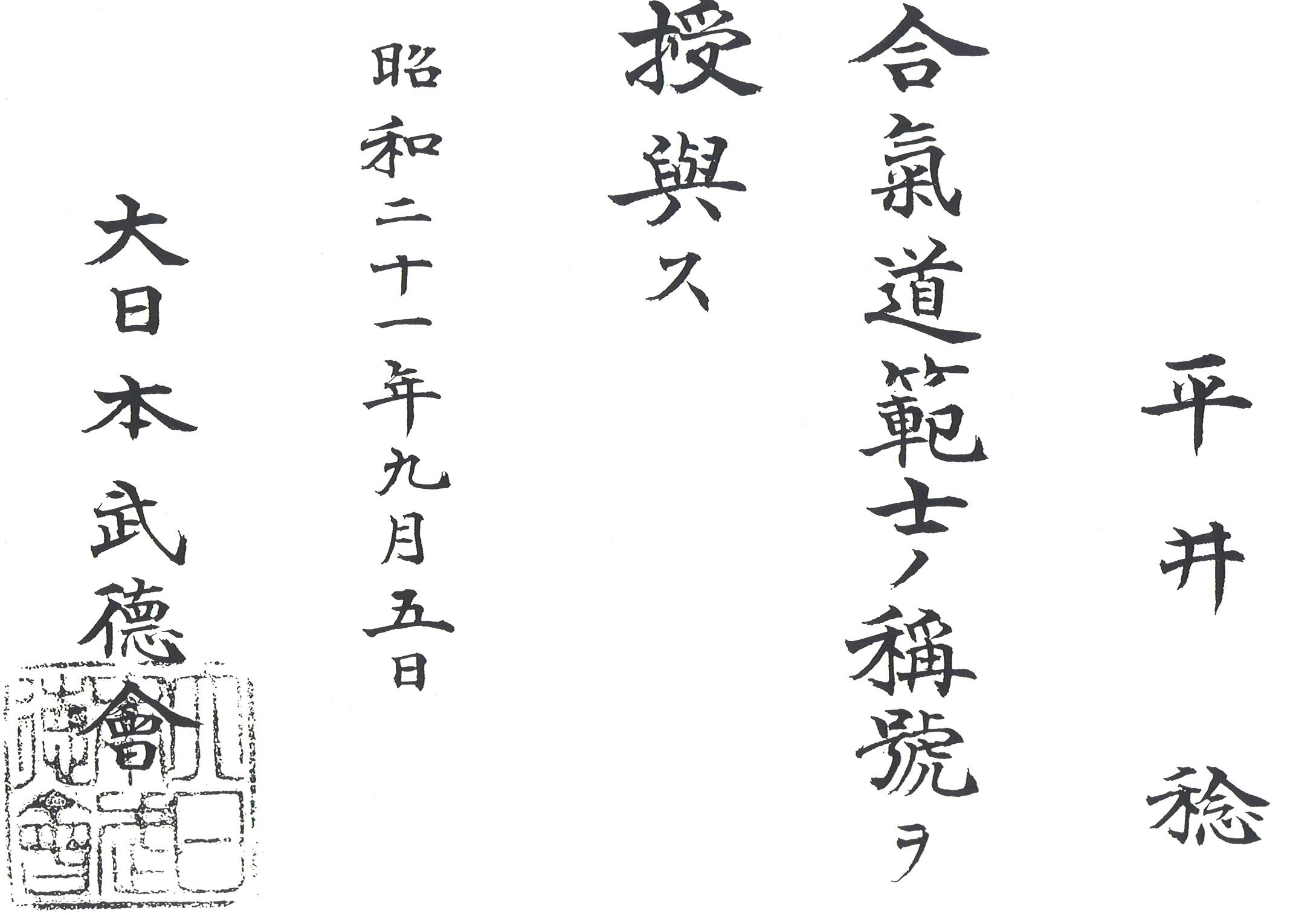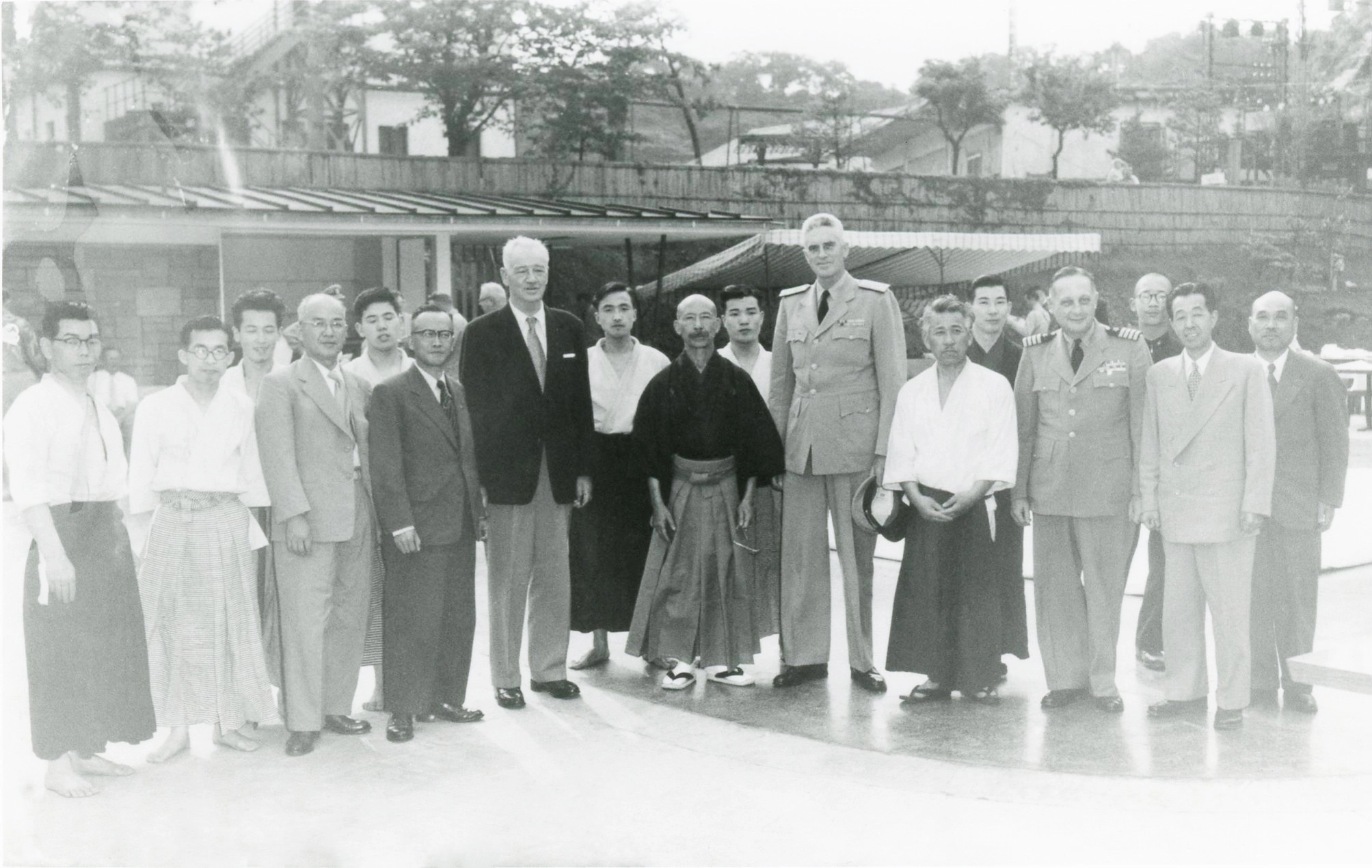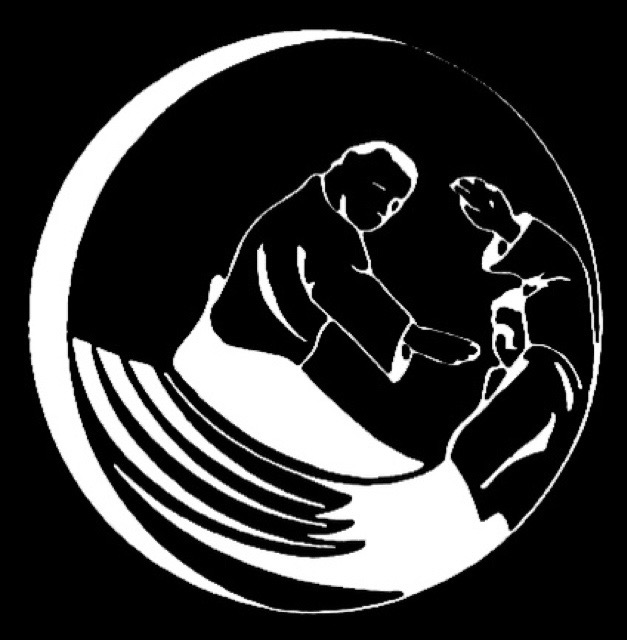History of the Name “Aikido”
In the early 1940’s, the Dai Nippon Butoku-Kai decided to create a new division within the organization to represent, unite, and standardize all jujutsu-based systems under one umbrella. To this aim, the DNBK appointed three martial arts masters to form a committee responsible for organizing and establishing this new division. The committee included Fujinuma Shohei (Kendo), Hisatomi Tatsuo (Judo), and Hirai Minoru (Judo).

Dai Nippon Butoku-kai. Minoru Hirai is seated, front row on the right.
In October of 1942, while in the process of establishing the new section of the DNBK, Hirai Minoru (acting as General Affairs Director of the Kobukan) represented Ueshiba’s Aiki-Budo, as one of the many jujutsu-based martial arts brought together under the umbrella of the DNBK organization. It should be noted while forming the new division, the committee believed it was necessary to use a name that would not contribute to political tension among the various schools they were attempting to unite. After much consideration, the committee agreed to refer to the new section by the generic, non-offensive name, “Aiki-do;” following the trend of such names as ju-do, ken-do, and kyu-do. The DNBK then appointed Hirai Minoru as the Central Secretary of the newly formed Aikido Division and later awarded him the title of Aikido Hanshi (highest honorific title awarded by the DNBK).

Minoru Hirai's Aikido Hanshi Menkyo.
Although the name “Aikido” was established as a generic term within the DNBK, used to refer to “Butokukai-ryu Jujutsu,” it was later “appropriated” by Ueshiba Morihei to name his modern martial art.
This said, as a point of historical significance, Hirai Minoru was the first and only Aikido Hanshi of the DNBK and his legitimate association with the name “Aikido” predated Ueshiba’s usage of the term. At the end of WWII, the DNBK organization was dissolved by order of the US Occupational Forces in Japan. Upon its closing, Hirai Sensei inherited DNBK Aikido, organized all dojo that were formerly affiliated with the DNBK Aikido Division, and established Korindo Aikido (later known as Nihon Korinkai Aikido).
The Dai Nippon Butoku-Kai (DNBK)
The Dai Nippon Butoku-Kai (Greater Japan Martial Virtue Society) was established in 1895, under the authority of the Japanese government and the Meji Emperor, for the purpose of promoting, standardizing, and preserving traditional martial arts in Japan. By the 1940’s, the DNBK was managed directly under the joint supervision of the Ministry of Education, Ministry of Health, Ministry of the Navy, Ministry of the Army, and Ministry of the Interior.

Minoru Hirai is standing in front, third from the right (wearing Keikogi and Hakama).
Falling under the authority of the Japanese government, the Dai Nippon Butokukai had a membership of more than three million practitioners and was responsible for overseeing several martial arts organizations; to include the Nippon Kobudo Association, All Japan Kendo Federation and the Kodokan (judo). The DNBK organization was closed from 1946 to 1953, pursuant to new regulations following the US Occupational Forces in Japan after WWII. Although the DNBK was re-established after WWII, it subsequently never held the same level of prestige, authority, and membership of the original organization.
